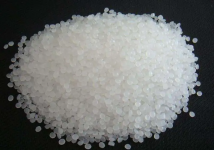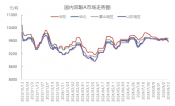read: 1164 time:2025-06-25 10:14:07 from:化易天下
Phenol and benzene are both aromatic compounds, but they exhibit significantly different reactivities when it comes to electrophilic substitution reactions. Understanding why phenol undergoes electrophilic substitution more easily than benzene is crucial for chemists and chemical engineers who are involved in the synthesis and application of aromatic compounds. This article explores the factors contributing to phenol's enhanced reactivity in electrophilic substitution reactions compared to benzene.
One of the primary reasons phenol undergoes electrophilic substitution more easily than benzene is the presence of the hydroxyl group (-OH) attached to the benzene ring. The hydroxyl group is an electron-donating group through both resonance and inductive effects. This electron donation increases the electron density on the benzene ring, particularly at the ortho and para positions relative to the hydroxyl group.
In contrast, benzene does not have any substituents that can donate electrons to the ring. Therefore, the electron density in benzene is lower compared to phenol, making it less reactive towards electrophiles.
Another critical factor that explains why phenol undergoes electrophilic substitution more easily than benzene is the resonance stabilization provided by the hydroxyl group. In phenol, the lone pair of electrons on the oxygen atom of the hydroxyl group can delocalize into the π-system of the benzene ring. This delocalization leads to several resonance structures where the negative charge is spread over the ortho and para positions of the ring.
This resonance effect not only increases the electron density at specific positions on the ring but also stabilizes the intermediate carbocation formed during the electrophilic substitution process. In benzene, there is no such stabilization effect, making the intermediate less stable and the reaction less favorable.
The enhanced electron density in phenol, particularly at the ortho and para positions, makes these sites highly attractive to electrophiles. Because electrophiles are species that seek out regions of high electron density, they are more likely to react with phenol than with benzene. This attraction significantly increases the reaction rate of electrophilic substitution in phenol compared to benzene.
Moreover, the increased electron density in phenol reduces the activation energy required for the reaction to proceed. This is another reason why phenol undergoes electrophilic substitution more easily than benzene.
When comparing the conditions under which electrophilic substitution reactions occur in phenol and benzene, it's evident that phenol requires milder conditions. For instance, while benzene might need a catalyst like aluminum chloride (AlCl3) to facilitate the reaction, phenol can often undergo the same reactions without such catalysts or under less extreme conditions. This difference highlights the intrinsic reactivity of phenol, rooted in the factors discussed above.
In summary, the primary reasons why phenol undergoes electrophilic substitution more easily than benzene include the electron-donating nature of the hydroxyl group, resonance stabilization, and the increased attraction of electrophiles to the phenol molecule. These factors collectively lower the activation energy and increase the reaction rate for electrophilic substitution in phenol. Understanding these differences is essential for chemists and engineers working with aromatic compounds, as it allows for more precise control over chemical reactions in industrial and laboratory settings.

Jincheng Petrochemical's 300000 ton polypropylene plant successfully trial production, 2024 polypropylene market analysis

The ABS market remains sluggish, what is the future direction?

Market differentiation of bisphenol A intensifies: prices rise in East China, while prices generally decline in other regions

The production method and process flow of silicone acrylic lotion, and what are the common raw materials